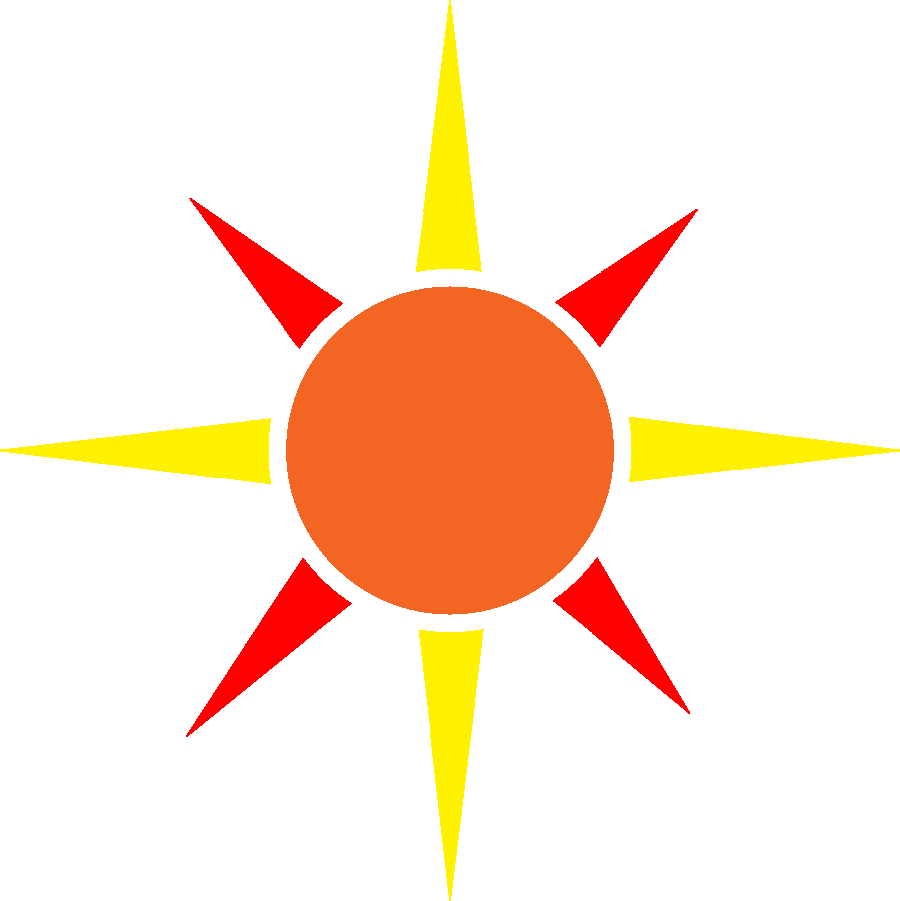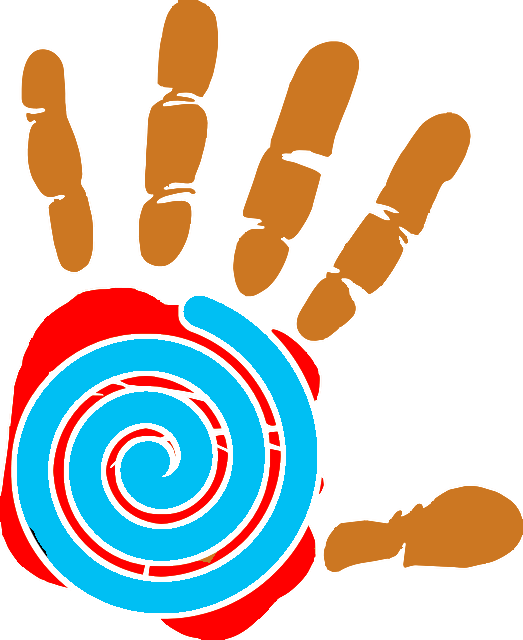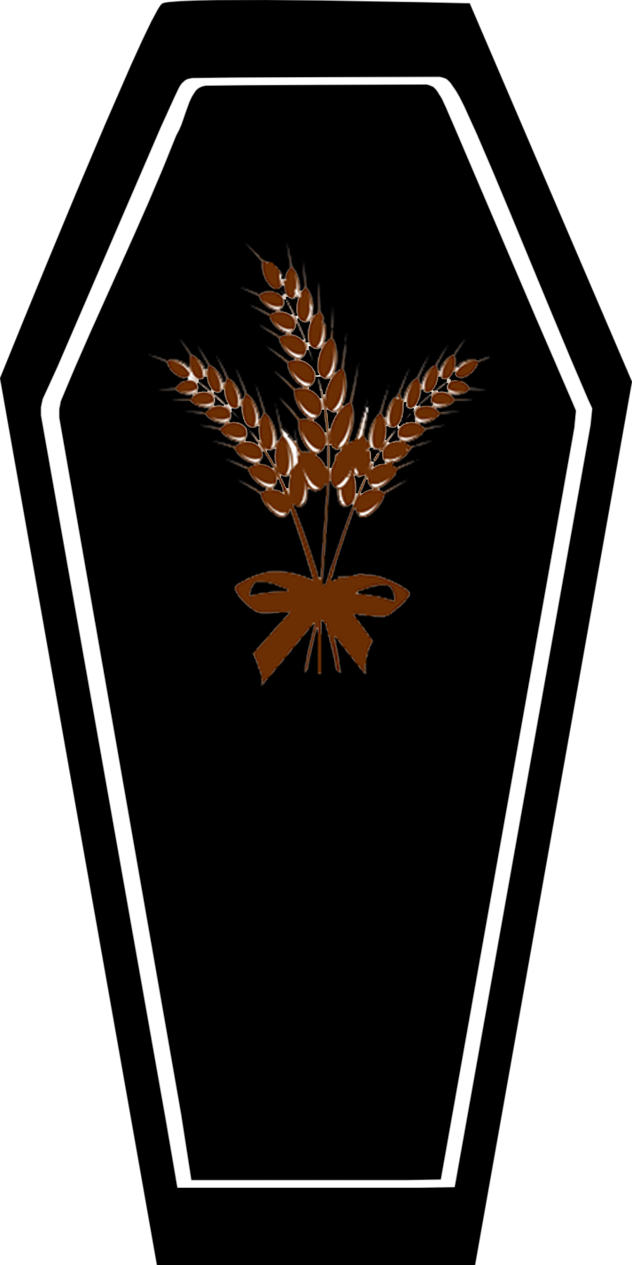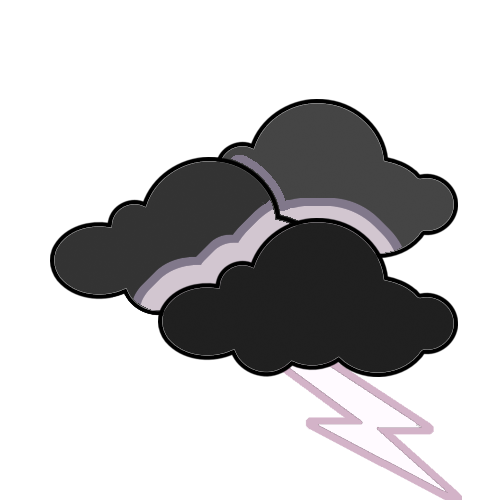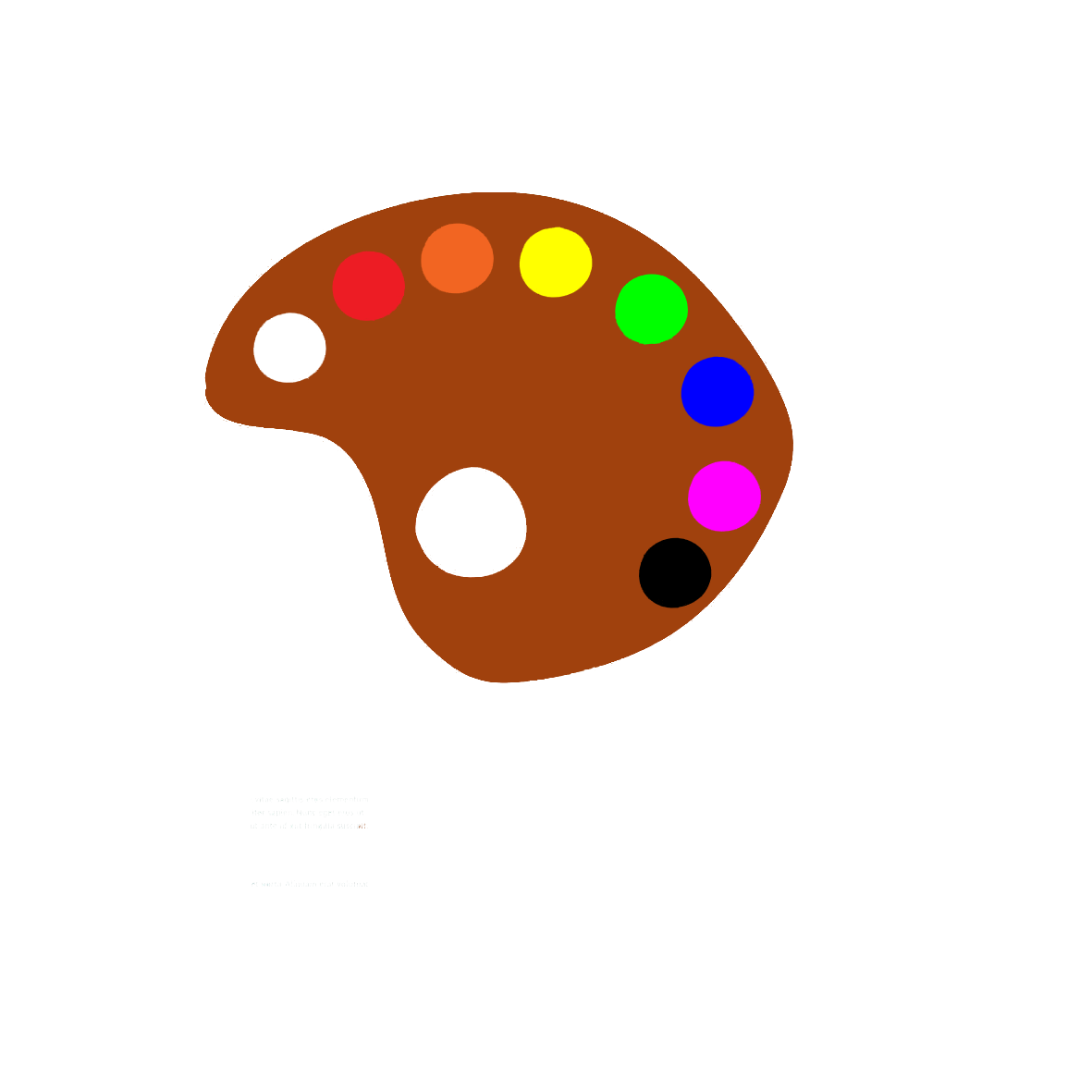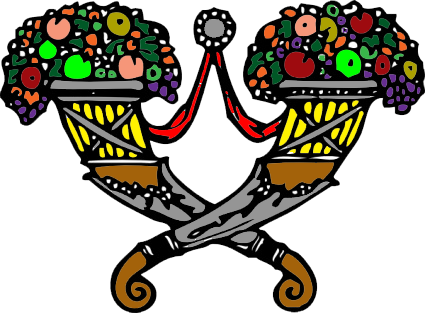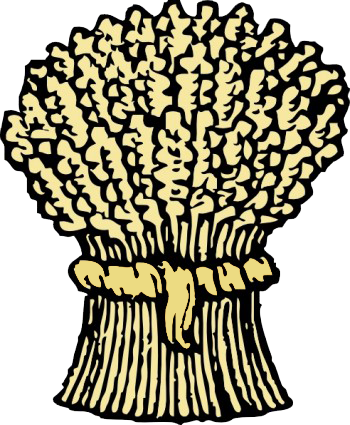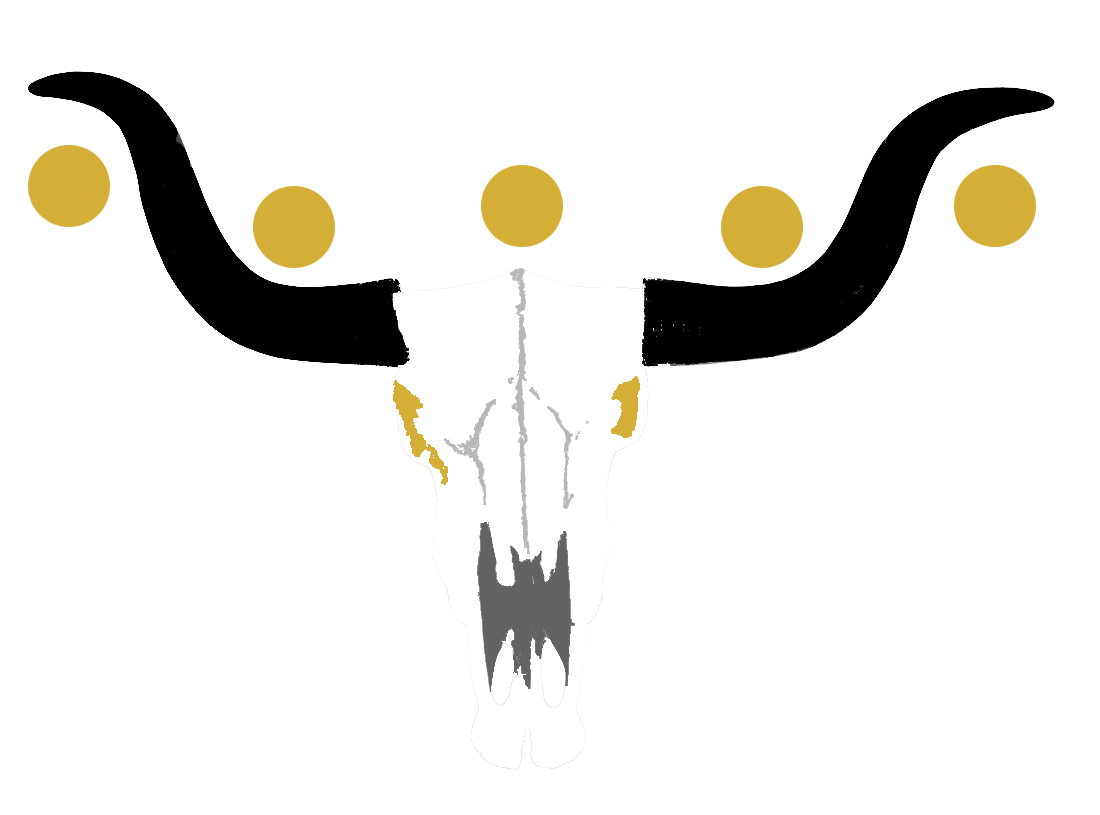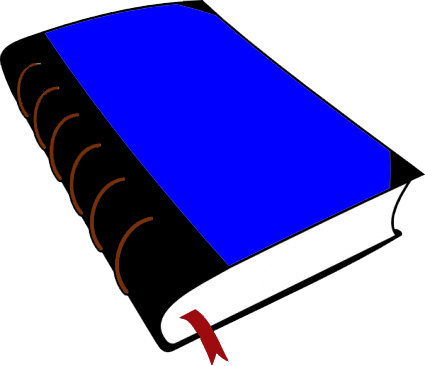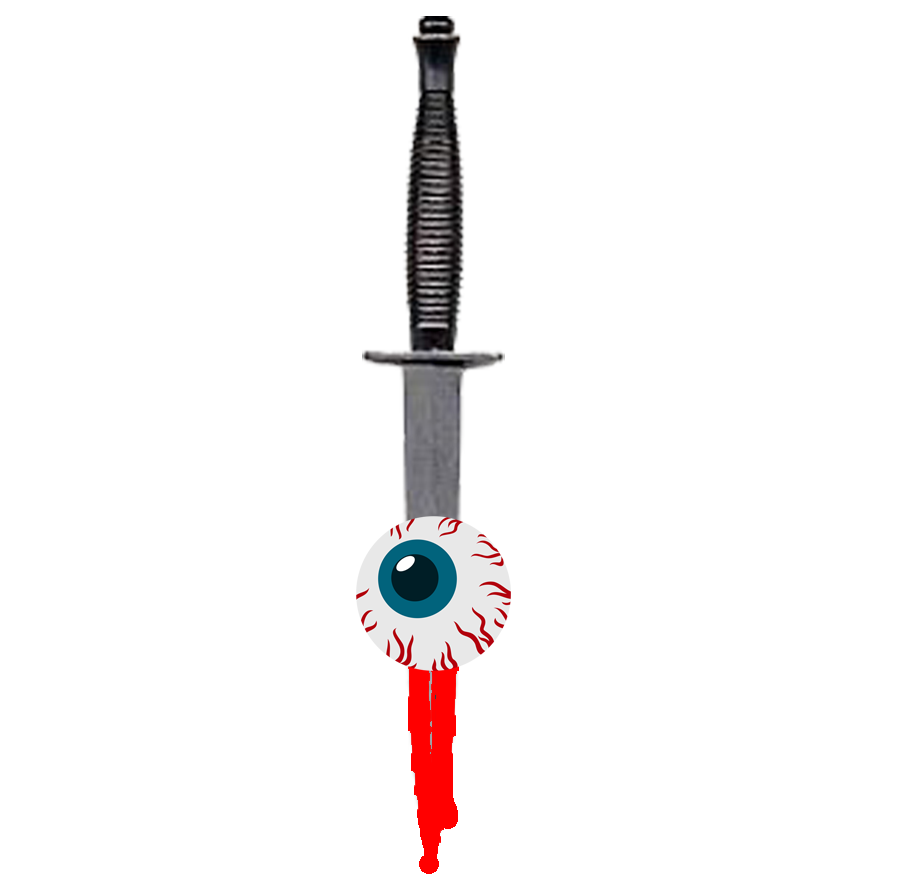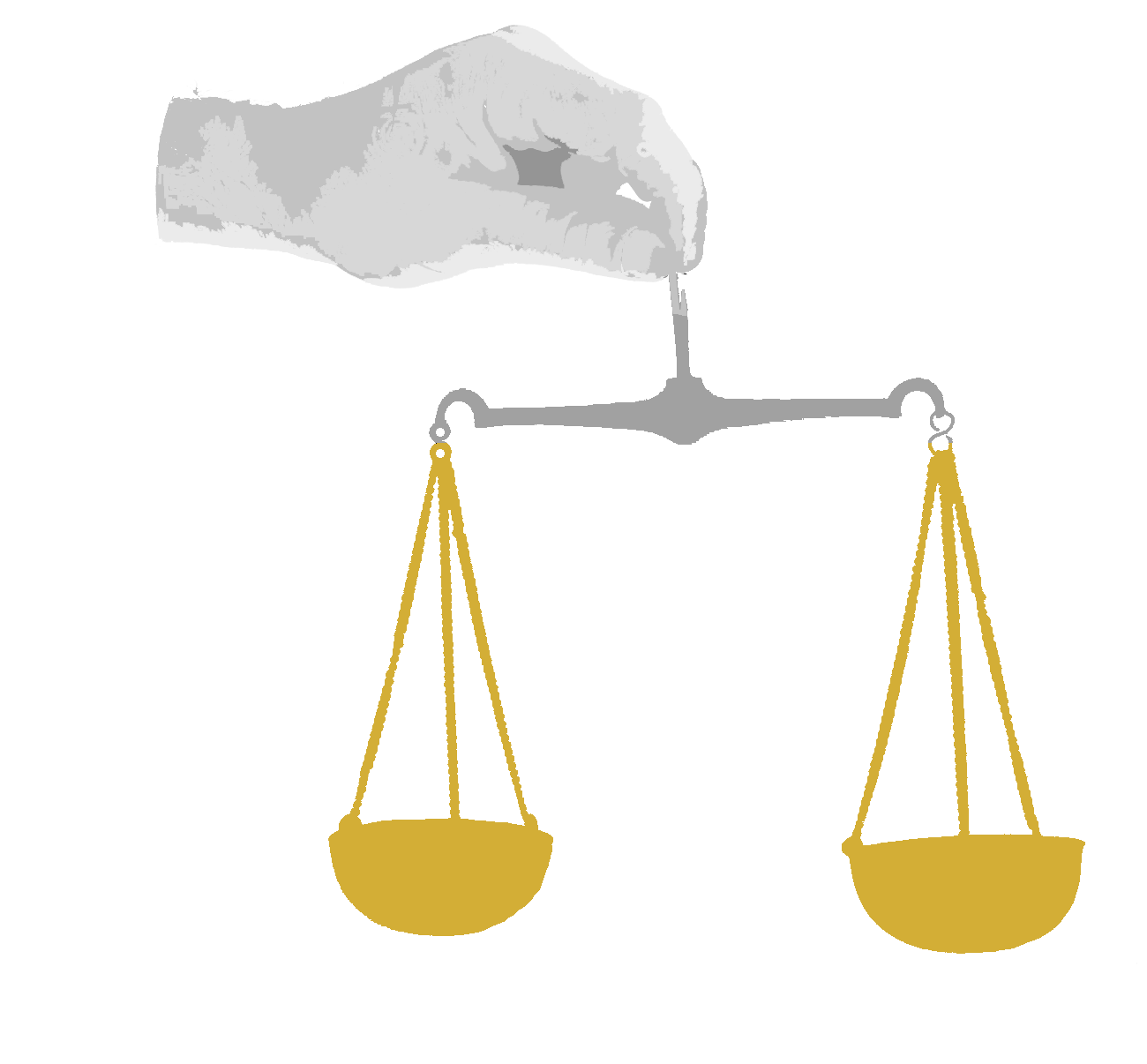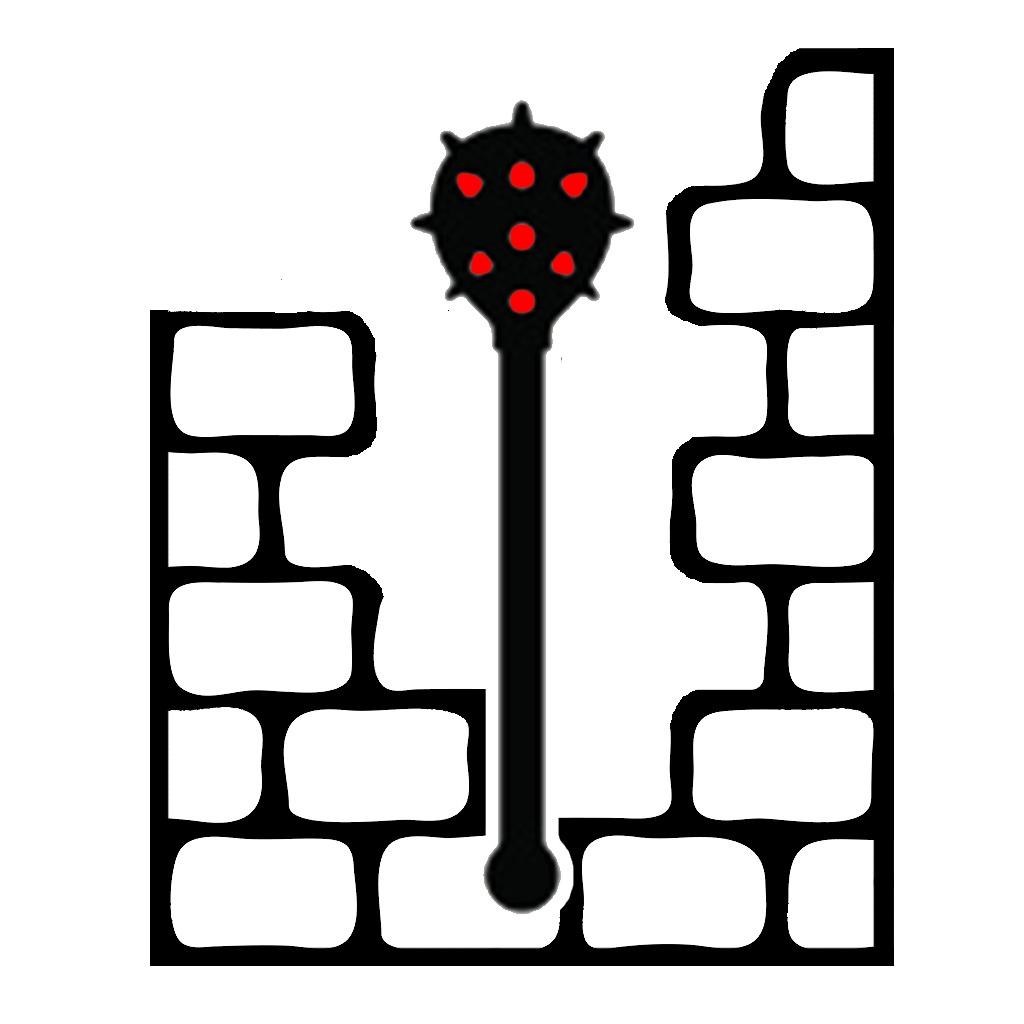Religion (Orizon Supplement)
The gods of Orizon are a potent force within the world, despite the fact that they do not often take a direct hand into the goings on of mortals. The gods typically act through agents or their servants. The pantheon of Orizon’s divinity has a complex structure of personalities underlying it, sometimes they are cooperative, sometimes they oppose each other in devastating politics, other times they come together to perform acts of truly miraculous power.
The religious structure of Orizon is reigned over by six ancient gods, the divine survivors of the breaking, beneath them are other gods, angels and other divine beings, souls that have passed that have been granted power, and fiendish demons and devils locked deep in the pit.
Much like the mortals that worship them, the gods have failings and virtues. They love, they hate, they fight, they can lose themselves in petty bickering. The gods, to prevent their conflicts from becoming world shattering, often act through mortals, employing influence both subtle and overt to aid their mortal agents, or to stymie their opponents agents. This is a delicate balance between the gods, one that all members of the pantheon are interested in maintaining, to keep things civil.
Priests in thousands of different sects gain access to divine magic in exchange for their investiture in their church and their gods. They are the primary instruments of the god’s mission in the world, and they are often the only manifestations of divine power that the average mortal ever encounters.
Worship[edit]
Except for the most devoted, worshipers on Orizon worship the pantheon on the whole rather than a specific god. The polytheistic faithful call upon various gods for aid for specific tasks or needs, hoping for aid under its auspices. Some people do have a specific god that they personally hold up, considering them to be their patrons, though they do still give devotion to the other gods when they feel the situation calls for it.
Few temples are constructed to honor specific gods. Instead, most religious sites are constructed to house numerous small shrines, one for each of the gods. Though there are still some locations where a single specific god is worshiped exclusively. Some places like these are sacred to that god and were specifically indicated as sites to place a temple. Others are significant to the god's faithful, and they will construct memorials, like a place where a god manifested or a powerful cleric performed a miracle in that god’s name. These sacred sites are locations of pilgrimage and some people will travel miles to reach out to touch whatever of the divine presence remains there.
Priests of the various churches and their acolytes are expected to be at least familiar with the honors, stories, and rituals of each of the gods, though they may focus on specific gods as their patrons. Clerics and Paladins are also expected to be familiar with the pantheon as a whole, but their focus on a specific deity for their devotion grants them unique favors. Clerics may also be called to act in opposition to some plan of their god’s rival deities.
Occasionally a god will reach out to a specific person directly, offering them guidance or power if they sense something special about the person, or sending them on a quest to aid in the god’s aims. Typically these are their clerics, but they can also reach out to adventurers and heroes.
Religious Institutions[edit]
Though the gods do not frequently interact with the world of mortals, their temples flourish. The efforts of the faithful picked up by those rare times that the gods do intercede. The priests of Orizon serve in honest faith and act to serve the interests of the gods as best they are able. Even if they may not possess divine magic, they rarely need it, seeking only a trickle of power from the gods to better meet the needs of the people they intercede with the gods for.
Because the gods rarely intercede with mortals directly and have taken little time to have their dictates transcribed, there are numerous sects devoted to the various gods. Each sect chooses to worship their deity in their own way, some are similar, others are wildly different. So long as the worshippers are faithful and do not act in opposition to the god’s will, the gods have been generally content to let people worship as they please. Though, should a cleric of a god choose to intercede this can cause tension. Should another sect interfere, it could even spark a full-blown holy war over the different interpretations of snippets of a god’s words and deeds. These situations of the delights of demons like Borst and if they spill over too far can even prompt genuine intervention from the gods.
Though most of the members of the priesthood venerate a specific deity above others, they eventually come to hold each god in their hearts and come to understand at least a general idea of the role that each god and their aspect fills in the world to better aid the faithful that come to them. Though, typically there are multiple priests in the various temples, enough that they can direct any questions people may have to those that can better provide answers and aid.
The temples of Orizon do not have a formal schedule, unlike some religions, they do not meet weekly, or hold any sort of sabbath or day of rest. Instead, the temples keep their doors open to all, anyone may seek the wisdom of the priests and the guidance of the gods. Formal meetings and observances occur during special festivals and holidays. Each god has their own day of observance during the year, and on those days the priests speak of their role and the wisdom that they advocate within the pantheon.
The Priesthood[edit]
Those that believe they feel the calling to the priesthood enter the temple as an acolyte. Though a specific god may have been their reason for joining the priesthood, during their time as an acolyte they are put to service under each of the gods for a set period of time. If an acolyte completes this time of service they participate in a ritual where they are ordained into full priesthood under the blessings of each of the ancient gods. Priests that devote themselves to a single god and ignore the others are known as “fore priests.” A highly ranked priest that is devoted to the faith of Soltis would be called the fore priest of Soltis.
There are a few high priests upon Orizon. The role of High priest is the highest position within the local church and carries with it great respect, but in order to reach this position, an even greater ordeal is requested. A high priest of Orizon’s gods must visit a sacred site for each of the gods. This quest that is guided by the gods, but must be carried out by the aspiring high priest.
Places of Worship[edit]
The gods do not demand worship from their followers, failing to attend church will not bring lightning down upon your head. Worship is given to them, and they expect it in kind. The gods are powerful, and their power has been demonstrated often enough that the people of Orizon know that there are gods and that, if they are very lucky, the gods may intercede on their behalf.
To that end, the people of Orizon have constructed numerous places where they can go and pay homage or supplication to their chosen gods. From grand cathedrals to opulent temples, to simple shrines, all of these help to give the gods and other powerful entities a very physical presence in the world.
The Great Cathedrals[edit]
The Great Temples are intended to serve as places of worship for the pantheon as a whole. They are large structures that have placed in alcoves within them, smaller shrines to many of the gods. These structures may have begun as a necessary reaction to the lack of space available on skylands but they have become a central part of the religious life of the people, where they can better reach out both to their gods and to the priests and faithful that serve them.
Because of their nature in service to the gods, and the fact that they are built in central locations on the skylands, indeed in most cities, these great temples serve as the focal points of many cultural and religious events and the temple steps are often used as a commonly known or easily found meeting place.
The temples themselves are built like most well-known cathedrals, divided into four major sections into a lopsided cross-shape. Nearly all of the great temples follow this simple design, though they may have their own unique twists. The front entrance section is for public use, people may come and go as they see fit and this portion of the temple is lined with pews for those who wish to sit and listen to sermons or simply think on the gods.
The rear of the temples serve as a residence for the priests and acolytes, as well as anyone else who may seek the shelter of the gods. Many times this area also serves as a hospital or sanctuary and very few are willing to break the taboo of committing violence in that place.
On either side of this arrangement are two annexes of differing length. On the shorter side are the shrines to five of the ancient gods, on the longer side are the more numerous shrines to the newer gods. Worshipers are encouraged to use these annexes to offer prayer and offerings to specific gods.
Smaller Shrines[edit]
Specific gods may appear before their followers and indicate a specific place that is special to them, demanding a temple be placed there. Some worshipers erect shrines to the gods to help bring their attention and aid. Some decide to build a shrine to a god if they believe that the god has done something momentous for them or others.
Most of these shrines are comparatively small, but still significant. An arena may have a broken wall with a mace to honor Vister, while a hidden grove in the deep forests may have antlers tied to the trees to better honor Diasilva.
Some temples though, especially if a god specifically demanded its construction, or had manifested themselves on its site, are grand, years and fortunes are spent on their construction and the consideration of how best to please the god.
The worship of some gods is frowned upon, or sometimes outright restricted or outlawed, so some shrines must be erected in secret. Shrines to Incancatus, for example, are built exclusively in deep darkness and shrines to Verdin are demolished as soon as the worship is complete.
There are also small shrines dedicated to lesser entities. Some build shrines to honor their ancestors, other to honor spirits, some have built shrines to the fey and umbral lords. Some have built shrines in worship of dragons and other powerful beings. Some mad few even build shrines to devils and demons.
The Gods[edit]
Millennia ago the pantheon looked very different. There were many more gods, and some of them interacted freely with the people of Orizon, taking material form and wandering the earth to interact with mortals. Then the breaking occurred, and nearly all of the old gods died. Some perished simply by being caught in the energies and were rent to shreds, other gods died fending off creatures that tried to attack the weakened plane. Most of the old gods that lasted died in the great godswar between the gods and the devils and demons of Orizon. As the people were devastated and their world turned to rubble, only the six oldest gods remained to aid them, the others were dead. Over the centuries, new gods began to rise to fill the niches that were left abandoned. Some gods were the children of the survivors, some were celestials, risen to a new height, still others were mortals that had managed to gain divine power and strength.
The gods of Orizon now visibly act mostly as patrons for the domains and aspects that they represent. They empower and guide their worshipers, bestowing magical blessings, whisper in their dreams, send celestial agents or, more rarely, appearing in an aspect or in person to act directly upon the world.
Direct influence on the world has become rare for the gods, they seek to balance each other and keep any one from growing too powerful. The gods are also distracted by their efforts to hold at bay the servants of the pit and outside influences that seek to destroy, consume, or seize control of the plane of Orizon. In addition, following the breaking, Soltis considered the influence of the gods on mortals to be one of its causes, and imposed restrictions and laws against excessive meddling.
Within their pantheon, the gods are not truly at peace, they bicker and argue, some oppose each other by the very nature of their aspects, others have more petty motives. The ancient gods rule the pantheon and enforce decorum among their members. They often encourage the other gods to use mortals as pawns for settling disputes.
The gods reside within the celestial manor, which sits at the peak of Orizon’s planar geography, a beautiful mansion surrounded by a lush and lovely garden. The main doorway of the manor acts as a gate to anywhere within Orizon’s planar region, and each of the gods possesses their own individual rooms within the manor, that each maintains and furnishes.
Orizon’s gods can empower the souls of the deceased, sacrificing their own strength to transform the souls that pledge themselves to the god’s service into angels, the more strength sacrificed, the more powerful. These angels often act as the god’s direct representative to the world of mortals.
The Ancient Gods[edit]
Following the events of the breaking, most of the gods of the ancient world died in conflict with the outside entities and Esuriiten titans, then again they were brought in to fight against the fiendish hordes raised by Incancatus. Only six divines survived this holy devastation, the oldest of the old gods, the ones believed to have been on Orizon since before the beginning.
These gods are the focus of the oldest myths and the greatest devotion, most worship is focused around them and the lesser gods fear their wrath and pay them subservience and tribute. The Ancient gods also command the greatest powers remaining from the old world, each retains control of a single solar archangel, the only surviving old angels. None of the new gods possess the strength to empower an angel to a solar’s strength. The knowledge of these ancient gods is immense, they have survived since the foundation of the world and they have seen both the rise and fall and the recovery of the world’s people.
Incancatus[edit]
- The Mad One in the Pit, The God of Power
- Chaotic Evil
- Arcana, Death, Knowledge
- Portfolio: Death, Evil, Magic, Madness, Rebirth
- Temples: Temples to Incancatus are built in the deepest darkness with a collection of teeth and eyes placed in a black bowl at the center of the shrine.
The first of Orizon’s gods, Incancatus created the structures of the flow of magic and through them, the foundations that the world of Orizon was built upon. His influence and ordely design were the beginnings of the great work of an entire world. The grand creations of Incancatus are the basis of the flow and therefore the basis of all Orizon’s magic. In the ancient world, Incancatus was directly involved with the mortals of the world, teaching them skills and marvelling at their understanding of magic. Though he left as the age of wonders began to shift into the great war, he was fascinated at the heights that mortals had reached. And then the breaking shook everything, cracking his magnificent structures.
The wreckage of its work and the death of so many gods during the cataclysm of the breaking drove the great god to madness. It decided that it would complete the breaking, destroy the world, kill every mortal that stood upon it, and then rebuild. It planned to make a better world on top of the ashes, a restoration of its great works. The other surviving gods opposed its plan, so it decided to instead raise an army of fiends and lesser gods, promising them divine power in the new world. Incancatus led them into a war with the other surviving gods to shatter the pantheon and impose its will. This war ripped the plane to further shreds, causing untold destruction and concluded in devastating all hope there may have been of reclaiming the old world.
The last of the surviving old gods under the command of Soltis finally won. The victors sealing Incancatus into the pit at the very bottom of Orizon’s cosmology, along with the demons and devils that served it. Now the greatest of the old gods sits imprisioned in what is both its prison and its fortress. From within its prison Incancatus rules with an iron fist, though it has little power without, except through unique circumstances and faithul. There are thin gaps in its prison, enough to keep it tight but still flexible and Incancatus can reach out small tendrils of power through those gaps. It manipulates its fiendish princes in the damned court and its faithful mortals in the material plane, all working to achieve its goal, freedom, then its final goal, the destruction of everything.
Soltis[edit]
- The God of Sun and Time
- Lawful Good
- Light
- Portfolio: The Sun, Law, Light, Time
- Temples: Temples to Soltis are always open to the sun, built with glass ceilings or simply without ceilings at all. Special markers are placed to mark the solstices and the progression of the sun across the sky.
Soltis was the second god to rise in Orizon, he is a god of light and of truth, and of the raw power of the sun. Once he was the grandest friend of Incancatus, and illuminated the trapped one’s work, providing it with further energy. Soltis was deeply saddened by the losses of the breaking and had hoped to restore some of the lost glory, protecting the world from the sudden attention of an Esuriiten titan. He had believed that he would be able to illuminate the world again, until Incancatus raised up an army. Soltis set out to stop his old friend, raising an army of surviving gods and powerful mortals. to oppose the evil gods and fiends. Soltis succeeded, though at a great cost, and, unable to kill him, imprisioned his old friend so that his madness could never destroy the world he just saved. To this day, in his grief, he marks the date of the breaking with an eclipse.
Soltis led the charge of gods and celestials against Incancatus, and because of this, in myth and legend, he is known as a grand destroyer of evil and the greatest of generals and warriors. His light is said to be soft on those he cares for, and searing to his enemies. The role he has taken after this grand battle is to keep watch over the plane of Orizon, protecting the broken world from Incancatus and its servants, or other beings that attempt to do harm to the plane or its people. He also dictates law for the lesser gods, acting in part to keep the mistakes of the breaking from occuring again. The laws with this motive are the main thing keeping the gods from directly interacting with the world as often as they did in the age of wonders.
Soltis extols his followers to burn away the shadows, and to bring his light where it does not shine. He is often invoked by those who seek the truth or virtuous guidance, or the power to simply burn away their enemies or the evil. He is associated with sundials and they feature prominently in his temples.
Celeste[edit]
- The Goddess of the Moon and Night
- Neutral Good
- Arcana, Light
- Portfolio: The Moon, Healing, Sex, Mercy, Mystery
- Temples: Temples to Celeste honor the moon, with polished silver and windows open to the progression of the moon across the sky, especially the solstices.
Celeste is depicted as a beautiful woman with pale skin, draped in robes made up of the night sky, stars and mist. Celeste aided in the construction of Incancatus’ great works, helping to refine them and calm the energies introduced by Soltis. She helped to create the planes of faerie and umbral to act as locations for living energies to refresh and decay as the flow cycled them through. Each of these planes retain a permanent aspect of Celeste, the moon on the faerie is always full, the moon in the umbral is always new. The shift between full and new moon also remains depicted in her symbol.
Celeste did not directly participate in the war against Incancatus, she largely avoided the fighting. Instead she remained in the celestial planes, providing aid and a place of rest for those that fought in the godswar against the mad god. She especially worked to care for those mortals that had been drafted into the war. Following the breaking Celeste has retained this desire for peace and healing. Her agents work to provide healing and peace and she personally has dedicated herself to calming the wild magics of Orizon and repairing the damage they call.
Celeste is primarily known as a merciful and calm god. Those who are lost and abandonded may find themselves beginning to slip away in her embrace as she offers them mercy. Whispering songs that have long been forgotten until they rest. She is a healer not merely of the body, but of the soul.
Celeste is also a god of freedom. She is permissive and free willed, never one to be ordered, even by Soltis or Incancatus at the heights of their power. She delights in people embracing their humors and freedoms and in the joys of mortals and life. She holds the nighttime as a place for people to embrace the true selves they keep hidden and express their desires. Celeste will often manifest in a guise of a beautiful mortal to join people in their nighttime celebrations, and sometime take lovers among mortals, showing them true love of a god.
Karn[edit]
- The Goddess of Earth
- True Neutral
- Nature
- Portfolio: Stone, Volcanoes, Childbirth
- Temples: Temples to Karn are built into the stone and soil, decorations are carved into the stone or dug into patterns in the soil. The most celebrated temples of Karn are built into volcanoes or deep underground, to come closer to sacred magma.
With the conclusion of the great work of the flow, the foundations of all magics and tremendous energy, the gods sought a focus for the energies, a place where they could mingle. Their solution was a world, the world of Orizon. The goddess Karn set herself forwards and began the construction of earth and stone, melding a molten core of rock and metal around a crust of soil. As she worked, building over the foundations of the flow, her work began to be dimly reflected in other planes connected to the material plane. Her work was a secondary foundation, one upon which mortal life depends and also served as a foundation for mortal’s birth and creation, though she left it to Tiad and Vesperi to place more on the foundation.
During the godswar, Karn acted nearly as an artillery commander. She flung massive stones at the massed armies of fiends and mortalsand pinned lesser gods beneath pillars of earth. She muddled the ground their enemies walked on and shook the earth to destabilize their formations.
Worship of Karn is held within deep caves and caverns with a great focus on natural formations inside of the caves and simplistic paintings of spirits and myths featuring Karn. The depths of these caverns help the faithful feel a deeper connection to the stone. Caverns with any exposed magma hold a special signifigance as it offers a connection to her “blood.” Volcanoes are seen as sacred places as sites of both Karn’s warmth and her wrath; as their eruptions will lay waste to everything in its way, but also leave fertile soil behind. During rituals for Karn worshippers use simple, almost stone age, tools. Priests spend weeks knapping and carving the tools to be used in the rituals.
Karn’s great focus is on the soil, metal, and stone of the earth. She protects and preserves it, and uses it to provide for the things living on top of it. To the people of the underground and underdark, Karn is considered one of the foremost gods. The dwarves especially worship and regard Karn, depicting her as the foremost ancestor of the Dwarven people and the great mother of every clan.
Tiad[edit]
- God of the Oceans and Seas
- True Neutral
- Nature, Tempest
- Portfolio: Oceans, waves, tides, sea creatures
- Temples: Temples to Tiad are built at the shore or on buoys in the oceans, but the water always washes into these temples. The grandest of these temples are built under the waves, incorporating the wreckages of sunken ships.
With the completion of Karn’s structure of the world of Orizon, Tiad stepped forth and unleashed a torrent upon the world, filling it with the waters of the rivers, oceans, and ice. With it, he provided the potential for growth and life upon the dry earth and to take the heat of the molten core. His waters sunk into the stone and sat on top of it and provides for much. He’s become a god of floods and tides as much as the gentle motion of streams.
During the godswar, Tiad twisted the waters into powerful whirlpools and smashing tidal waves, or simply wrapping them up into great floods. The powerful foes, great abberations and monsters, Tiad yanked down with great chains of ice and iron. He imprisioned them beneath the depths, gradually crushing them to death under the suffocating weight of an entire ocean.
Tiad is a tempermental being, aloof and mostly unconcerned. He can be prone to placid stretches and kindly gestures and deep caring. But he is also famously quick to anger and lashing out. He has been known to destroy ships, crushing them with nothing more than the movement of water, seemingly at a whim. But this temperment, like the ocean, conceals hidden depth and there is immense care within Tiad. He may occasionally grant a fisherman an impossible bounty or carry someone stranded safely to their homes on gentle currents.
Tiad’s focus is on the waters of the world, merfolk worship him above all other gods and construct great temples on the ocean floor. Sailors also believe that Tiad specifically left the massive trade routes that connect the continents open to travel for the mortals that sail the seas and wish to keep the world connected. They also believe that there are secret islands in the ocean, kept concealed by Tiad’s currents until he chooses to reveal them.
Vesperi[edit]
- Goddess of Wind and Skies
- True Neutral
- Nature, Tempest
- Portfolio: Wind, Rain, Storms, Skies
- Temples: Temples to Vesperi are elevated and open, often having a platform built up at a peak to better allow access to the sky. The most celebrated temples of Vesperi were built up into the skies out of floatwood and blimps.
The foremost concept people hold of Vesperi is freedom. Freedom of travel, freedom of mind and spirit, freedom of breath. Vesperi is known to be flighty and aloof, as quick to change the subject as she is to change her mind. Some dismiss her and her power, taken aback by her whimsy, until they witness a tornado or a hurricane. Then they never question the power of wind again. She is a god of storms and tempests as much as she is a god of the breeze, and her flights of fancy can also take her to places of stormy wrath.
With the creation of the soil and the seas from Karn and Tiad, Vesperi saw the works and realized that they were still incomplete. She sent her winds down, first in powerful tempests and then in calm breezes. Her winds smoothed out the jagged rocks of Karn and gave direction to the tides of Tiad. But more than simply being wind, she provided the breaths of life that finally allowed the creation of mortal races. She provided the air they breathe as much as the winds they ride their sails across.
Though she has always been a powerful god, with the rise of the skylands Vesperi has taken a much more prominant position in the understanding of Orizon’s gods. The people of the skylands see her as a major figure, hoping for fair winds or the protection of a fog. The mother of winds features highly in ritual on the skylands and there is a prayer to her carved somewhere in the hull of every airship.
During the godswar, vesperi acted against any hope the massed armies had of air superiority. She battered them with her winds and yanked their weapons from their hands, turning her tornadoes into whirling showers of blades.
Vesperi is fickle, and often content to simply let things be as the winds blow, but in her wrath deadly twisters can uproot entire cities, scattering them across the four winds, powerful elementals under her command. By the same token she can send pleasant winds, calm breezes or light zephyrs that will lead a ship home or refresh the soul.
The New Gods[edit]
Though they are significantly less powerful than those ancient gods that survived the breaking, the new gods of Orizon are still tremendously powerful, fueled by the power of their faithful combined with the raw energies of Orizon. Some of these gods arose simply because mortals needed them, created from a sort of gap in worship. Some gods were born from the union of other gods. Others were once the servants of other gods, that have risen up to divinity in their own right. Some gods were once mortals, but are now divine, through powerful means and esoteric tools. All of them took in worship and power to inflame their initial spark of divinity, lifting them up to undreamed of heights from simple spirits or mortality to true divinity.
Regardless of their origins, the gods of Orizon command tremendous power and great worship among their followers. These newer gods are the source of the greatest amount of mythological drama within Orizon’s pantheon as they jockey for power and influence between each other, often using mortals in their schemes.
Agressa[edit]
- Goddess of Aggressive War
- Chaotic Neutral
- War
- Portfolio: War, Tactics, Battle, Weapons
- Temples: Temples to Agressa are built on top of the sites of grand battles, honoring the soldiers who fought and the generals who commanded them along with Agressa.
The goddess of warriors and commanders, she advocates for tactics and tacticians. Her favored methods are proactive, ones that bring the fight to the enemy and forces them into a defensive position. Generals and emperors alike stand among the faithful of Agressa and some have even seen symbols for her worship in the halls of Ruatha.
The primary worshipers of Agressa are soldiers that are serving in foreign fields. Soldiers fighting for a country or cause and mercenaries fighting for coin all hold up Agressa in their hearts as they go to war. Some think of the success of her tactics and the inspiration of her leadership. Others think only of victory. She also advocates for her followers to dedicate time to training others so that they may aid in the fight.
Her pushing of aggressive tactics puts her at odds with her brother, Fortison. Her armies bash against his walls, her soldiers storm his defenders. Her other brother, Vister, often stands at her side but the two also butt heads over philosophy. His idea of bloody glory in combat and the joy of honorable success clashes with her concept of the necessity of war and of tactical soldiers being more important than strong warriors.
Agressa serves as the commander and chief tactician of the heavenly host. They are a coalition of souls of deceased warriors and angels, all empowered by the gods, that stand on the edge of the planar geography in the battlefield. They stand ready to oppose extra-planar entities that attempt to enter Orizon, or fiends that may try to claw their way up to the celestial realm to find a means to free their master.
Ashotene[edit]
- Goddess of Medicine and Healing
- Lawful Neutral
- Arcana, Death, Life
- Portfolio: Medicine, Healing, Cleanliness, Death
- Temples: Temples to Ashotene are sparkling clean and prepared to function as surgical halls as readily as places of worship. Behind the temples are mausoleums where the ones who could not be saved are laid to rest.
The goddess of healers and doctors Ashotene is, surprisingly, the first to advocate stinginess among her followers. She is a practical goddess and insists that if a wound can be treated through mundane means, then explore those first. Any healer who gained their knowledge through Ashotene is also a skilled medic and will spend years of their lives in medical training and practice before the goddess will grant them the ability to perform even minor healing spells. Shrines of Ashotene are also cleared out as medical facilities, giving the healers a place to work and the healed a place to recuperate. More often shrines to the goddess are simply placed where there is healing to be done. Ashotene is also a major advocate for cleanliness.
Ashotene has two major symbols, her common one displays her magical healing touch, a laying on of hands, her other symbol is shown by her faithful, a stitched and bandaged wound.
The goddess was once an angel of Celeste, the soul of a healer that had passed on and the goddess refined into an angel, empowered to heal. She flew great distances to provide her healing touch and gradually began to gain power from faith, beginning her rise to becoming a goddess in her own right.
There is a secret cult of Ashotene that act as “angels of death.” The “angels” meet as a group and discuss their patients and if they as a group decide that one of their member’s patients is beyond healing, they will give them a peaceful death. These followers, typically the most senior clerics of Ashotene, are experts on the use of poisons and typically pay homage to Bern as well.
Avarcus[edit]
- God of Wealth and Greed
- Neutral Evil
- Trickery
- Portfolio: Wealth, Gold, Trade, Theft
- Temples: Shrines to Avarcus are hidden away and small, typically they are little more than cash boxes branded with the symbol of Avarcus. Worshipers place items of value into the box, one that is truly blessed will not hear the coin fall, it simply disappears, sent to the hoard of Avarcus.
A god of greed, wealth, and excess, the most common depiction of Avarcus is that of a dragon sitting on top of a massive heap of treasure, wreathed in gold and excessive displays of wealth. The god is deeply and nearly violently offended when its holy symbols, shrines, or prayers don’t include some portion of genuine wealth. In part as a result of this, the symbol of Avarcus gradually shifted into a simplified golden coin.
Avarcus’ influence also has the interesting effect of maintaining the value of precious metals as the god takes from those faithful that would give him coin, but also returns some regular amounts to a chosen few, keeping the supply both rare and constant.
Avarcus is the owner of an immense hoard of wealth. Enough to buy ten kingdoms ten times over. He will occasionally part with portions of his treasures, sometimes giving it away to those faithful that have provided him with much. Other times he bargains for it, but only should petitioners offer something he believes to be of greater value. Some clever souls have managed to pry immense wealth from Avarcus through praise or deceit, or simply through an impressive sales pitch. Metits is said to be a hated enemy of Avarcus, as the trickster god often cleverly convinces the hoarder to part with immense wealth for some menial object.
The faithful of Avarcus carry golden coins blessed by his priests in the hopes that someday they might amass wealth worthy of the draconic god’s praise.
Bern[edit]
- God of Death and Peace
- Lawful Neutral
- Death, Grave
- Portfolio: Death, Harvest, The Afterlife
- Temples: Temples to Bern are quiet places of contemplation for people to remember those who have recently passed and give offerings to Bern in the hopes that they will help them find peace.
Bern is a god of calm temperment and simple sensibilities. They preside over the afterlife, casting their angels out to protect the souls of the dead and overseeing the labor of those souls that complete their journey through the afterlife in the dead fields. They believe in the peace of death and the need for these souls to pass on in some semblance of peace. Their primary goal for this is the simple, almost zen, act of meditative labor following the journey across the afterlife. This labor serves another purpose, souls are possessed of divine energy and their work helps turn that energy towards the gods. When the souls finally are at peace and fade, the whole of the remaining energy is returned to the flow. Bern ensures that there will always be a seamless motion to the work and that the labor does not overly strain or tire, he keeps the fields flush and provides fallow, overgrown, fields to be cleared. During the winters, it is believed that Sildrin leaves the fields of the mortal world and travels to the dead fields of Bern to aid them in this task.
Bern opposes and despises the creation of greater undead. Creatures like liches or vampires are anathema to him, not simply because they defy the passage of life into death but because their unnatural death requires stealing the souls of others to sustain it. In the rare times Bern does set out to act in the world, they work to oppose these undead. Paladins of Bern hunt necromancers and undead with a fervent zeal. Though the god does not have too much concern with lesser undead like skeletons and zombies as they don’t interfere with the soul, just the remnants of an empty body.
Bern does not often act within the affairs of mortals, and they rarely leave their duties attending to the dead for any great stretch of time. But Bern is often invoked during funerary services in the hope that Bern will protect the souls of those departed and give them an afterlife of peace.
Bol[edit]
- God of Storms
- Chaotic Evil
- Tempest
- Portfolio: Lightning, Winds, Tempests, Rain, Storms
- Temples: Temples to Bol are windswept messes, built with the shattered remnants of where his storms had passed through. Shrines to Bol are intended to both honor the god’s destructive power and to hope to quell it.
Bol is the son of the gods of wind and sea, he inhereted their flights of whimsy and their sudden flashes of wrath and was quickly consumed by those impulses. Bol will whip up storms and tempests seeming at a whim, lashing out at slights imagined or real, and simply to relish in its own power granted by divinity. His storms at their most powerful lay waste to anything in his path, ripping apart enitre villages and killing many. Though his storms are powerful they are often, fortunately, short lived. The anger of Bol is quick to fade or transition as his attention is caught by some new focus or simply to become spent.
Bol’s storms do have their uses, the other gods exploit his temper as an instrument of divine retribution, sending him out against peoples that have done great insult to the gods, or sometimes that have simply caused offense. He also uses his storms to toy with mortals or to position “heroes,” whipping up winds to fling them to far off shores or deprive them of the luxury of rest.
The faithful consider him reckless and impetuous, without a great deal of foresight. When pressed they may even call him a brat, before fearfully looking up to the sky. Many legends credit the development of flying sea creatures, such as windfish or the sky whales, as coinciding with his birth and closely associate them with him.
Desim[edit]
- God of Madness and Genius
- Chaotic Neutral
- Arcana, Knowledge, Trickery
- Portfolio: Invention, Destruction,
- Temples: Temples to Desim are well reinforced, covered with the scattered remnants of experiments carried out by the clever people that the god attracts.
Desim is, at his best, unpredictable. He is one of the greatest sources of progress in the world, and also of destruction. He has one of the wildest depictions in myth, appearing before mortals in hundreds of different forms and driving them to feats of incredible creative genius or depths of depravity. He’s also seen as the hundreds of minor figures that provide creative people with that last spark that allows them to connect the final pieces of the puzzle needed for their great works.
Desim is often credited with helping in the creation of black powder, placing a candle too close to an experimental mixture of substances and letting them ignite. All to show the alchemists mixing it the tremendous gift they had stumbled upon, and its possible applications. There are myths of Desim trying to resurrect a titan to swat an anthill that had stung one of his prized inventors. There’s a parable of him telling a passing bard a story so maddening that the man lept off a skyland in a desperate attempt to understand the parable. He is also credited with the creation of several monsters that now roam Orizon. He “aided” drow bioalchemists in the creation of driders, and created the chimera as a way of calming the storms of wild magic. Both of which were successful in meeting their goal, but went on to cause untold destruction.
As a new god, born following the breaking, Desim has no access to the knowledge of the past, and is building off the same foundations as the inventors and creatives he gives his patronage to. This gap in his knowledge is considered a tremendous boon to the world as a whole.
Diamete[edit]
- Goddess of the Wild
- Chaotic Good
- Life, Nature
- Portfolio: Nature, Woods, Forests, Beasts
- Temples: Temples to Diamete are built deep in the forests, they become quickly overgrown, to the point that the encroaching greenery is as much a part of the sculpture as any stone. They serve as the beginnings of great hunts and hide fey passages.
The eldest daughter of Karn, Diamete is a goddess of wild places. She extends her patronage to the untamed hill, the deep forests, the untrammelled bogs, aird deserts, and abandoned Skylands. She stretched her influence over all places that are far distant from civilization and the people that live in them. She is a patron of rangers and druids, offering them aid and guidance in their efforts to explore wild places and to live with them as much as they live within them.
Diamete is also a goddess dedicated to preserving the balance of nature and the health of environments. She understands the value and the other purposes of a huntress. She will occasionally manifest in the mortal guise to challenge herself against strong and crafty beasts in a great hunt. In part, this is to keep the room in the food chain, like cutting down a great tree so the shoots beneath it can gain sunlight to grow. But this is also simply something she does for the thrill of the hunt, a deep passion of Diamete. Those beasts that survive being hunted by Diamete, or even those that prove clever enough to hunt her in return, gain her respect and her blessings, giving them magical power in addition to their wiles. Any creature that survives her hunts become true kings of their domain.
Her followers construct simple shrines deep within wild places. Should she give her blessing to a shrine it will quickly become overgrown and “returned” to her. Ruins of past kingdoms that have been lost and overgrown are considered especially sacred to followers of Diamete. This recognition of ruins and overgrowth, as well as the thrill of the challenge of the hunt, makes Diamete a frequent companion of Vister. She believes that his destruction of civilization will allow room for her wilds to grow and he relishes the connections between her hunts and his foundations of individual strength and honor.
Diamete is considered a patron of werewolves and similar monsters, creatures with a bestial side that coexists with their humanity.
Estina[edit]
- Goddess of Travelers
- Chaotic Good
- Light, Trickery
- Portfolio: Travel, Messengers, Adventure
- Temples: Temples to Estina are small affairs, often serving as way stations for travelers, they hold maps and a plinth with a compass. Travelers who enter a temple of Estina are encouraged to leave provisions and news and to write some of their travels and their names into the temple’s logbooks.
After the breaking, there was the tragedy of those who were lost. Landmarks were upended, old maps were useless and homes were destroyed. People were forced to wander, lost. One person wandered for years, she was lost in the twists and turns of the world, using the rising sun and the stars as her only reliable landmarks. She wandered for ages, until her feet were tattered and her face was haggard. Unbenownst to her, she was also the first dreamer, able to travel the astral plane with ease. In her dreams she called out to the gods for a destination and help finding her way home. Eventually both Soltis and Celeste answered her prayer. They sent her a child and she made her own home. That child was the demigod Estina and what was desperation in her mother, the endless wandering was excitement for her. She began to travel and never stopped, in her journey she restored a sense of wonder in the world and the mysteries that were around the corner that people had lost. That hope became worship and a demigod became a fully fledged god.
Estina knows that all too often the journey is more valuable than the destination at the end, but also the value of coming home again. This creates a duality to her nature, sometimes she will take people where they were going, sometimes she will fling them far astray. But the journey is never dull and never without value, and somehow they always journey to where they should be. She is a valued partner of Diasilva, taking the goddess’ wild spaces as valuable places to explore.
The faithful of Estina operate lighthouses and waystations, providing lodging and security for people on their travels. They also construct simple shrines that serve as caches along pathways and near shelters. Most sailor’s islands have a prominent shrine to Estina for traveling sailors to offer their prayers.
Fortana and Fortina[edit]
- Twin Goddesses of Fortune
- Chaotic Good & Chaotic Evil
- Trickery
- Portfolio: Luck (good & bad), success, failure, chance
- Temples: There are no temples to the twins, they are as likely to bless these temples as they are to curse them. Instead there are small shrines lined with felt, with dice and decks of cards placed within.
The twin sisters of luck, one sister represents and grants good luck, the other sister represents and grants bad luck. Unfortunately, or perhaps fortunately, for their worshipers no one knows which sister is which and neither of the two goddesses will say. Because of this the two are worshiped as a single god, worshipers pray for good and bad luck, hoping that the right goddess happens to be listening, but knowing that the flip of a coin or roll of the dice could lead to disaster as easily as success.
The twins often feature into the beginnings or the middle of legends. They offer mortals a gamble or a chance to have their prayers answered. Some set out to undo the bad luck brought by one sister, or are saved by the good luck given by the other. No one is quite sure what relationship the sisters have with the god of fate, Norn. For some the prospect of chance flies in the face of ordained fate, others believe that destiny is a response to chance and neither can exist without the other.
The mortals held in the greatest favor of the twins are those who surrender to the roll of the dice and simply let the whims of luck happen. But this favor may not always be a blessing. Both goddess’ despise cheaters or those who rig games of chance, especially if those people already began the game with an advantage. The more egregious the cheat, the less the goddesses listen.
Fortison[edit]
- God of Defensive War
- Lawful Neutral
- War
- Portfolio: War, Defense, Fortifications, Tactics
- Temples: Temples to Fortison are built into fortifications, lined with shields and armor. These temples are often the strongest parts of the wall and also is designed to serve as a safe hold for people to hide and keep themselves safe.
Fortison is a god of walls and shields. He is a commmander that advocates for defensive tactics and strong bulwarks. He encourages strong soldiers to stand firm on a wall and serve as a redoubt against attackers and foes. He understands the perils of a siege and urges commanders to keep their food stores stocked and their walls strong. Paladins and faithful of Fortison are pledged to protect those that cannot protect themselves and will fight to the last man to defend their homes.
Fortison is a patient god, especially when compared to his sibling war gods, and he encourages that same patience among his followers. His faithful stand strong and wait for the enemy to make a mistake, they trust in the preparations they’ve made. His faithful make constant, patient, effort keeping their defenses ready then strike when their foe is weary.
Fortison, like the other war gods, often butts heads with his siblings. He think Aggressa is short sighted for relying on offense and rushing to battle, and he believes Vister to be a fool for charging forwards with nothing more than eager bloodlust. And he resents both of them for crushing walls and defenses. For their part, they consider him a dull neccessity, or a hindrance to the true glory of combat.
Most of Fortison’s worshipers come from those behind the walls, praying that their defenses hold, and from those on top of them, ready to hold to the last.
Imperna[edit]
- Goddess of Art and Magic
- Chaotic Good
- Arcana, Light
- Portfolio: Art, Magic, Magic Items, Music
- Temples: Shrines to Imperna are places for expression and artistry, often open to vistas and views for inspiration for artists. Sorcerers and wizards also come to express magic as an art more than just a tool.
Imperna is a goddess of artistry and inspiration. She is a muse and empowers the angels in her service to occupy the same capacity. She takes in those individuals who strive to make great art, who practice and study and sends them angelic guides to teach them form and to grant them inspiration. After their life she offers to empower them to serve the same function for other struggling artists. Imperna also recognises the possiblities of magic as an artistic tool, from the compositions of bards to a sorcerer turning flames into delightful punctuations and illustrations of a story. She adores unique expressions with illusion magic and clever twists in a weave.
She delights in music and stories and cares very little for whether or not a story is true, only if it’s interesing. She likes creative twists and unique experiments of form. Much like Desim she enjoys clever applications of unique concepts and reckless experimentation. Though their end goal is different. Desim values function, Imperna values form. It doesn’t matter if something works, just if something’s interesting.
Beyond artists, Imperna often acts as a patron for sorcerers and those who use their magic towards intuitive and creative ends. Occasionally her patronage of arts and magic intersect and she will instill great works of art with magical power, creating beautiful magic items. Her influence has done much to redeem the opinion of magic to the people of Orizon.
Matre[edit]
- Goddess of Hearth and Home
- Lawful Good
- Life
- Portfolio: Child Rearing, Family, Home
- Temples: There are few temples to Matre, but there are many shrines, placed above the hearth in a family’s home. These are simple horns filled with foods and mementos.
Matre is the youngest dauther of Karn, and has ten a seat as the goddess of hearth and home. She serves as the patron of the hearth, home, and the family. She serves as the patron of homemakers, mothers and father, as well as chefs, inkeepers, and anyone else who makes care for others their focus or their profession. Matre especially cares for people who care for children. Unlike Karn, who simply acts around birth, Matre acts around care.
Within the pantheon of the gods, Matre is the one who takes the crops grown and harvested by the souls of the dead and makes them into great feasts for the gods and their servants. Some believe that she melds the secrets of empowering departed souls into angels into her cooking.
Matre’s most common partnership is with Sildrin, the goddess of the harvest. One acts for the community, the other acts for the home, together they develop something sustainable and beautiful. Devotees of Matre are the ones who prepare the harvests of Sildrin into the great feasts of harvest festivals.
A focus of matre is also of protecting supplies. She and her followers construct barns and granaries to preserve crops and animals. And smoke houses to preserve meats. Cats are sacred to matre, thanks to their role in hunting pests that might steal the preserved and stored foods.
A cornucopia and similar symbols of plenty and feasts are sacred symbols of Matre, and her followers attempt to live up to that provision of bounty. Or they pray to her in lean times, hoping that she might spare some of the bounty of the gods’ feasts.
Mattis[edit]
- God Of Trickery
- Chaotic Neutral
- Trickery
- Portfolio: Pranks, Thieves
- Temples: Mattis’ shrines are small, and they are typically filled with little trinkets for children, toys, or simple tools for pranks, like small firecrackers, noisemakers and whoopee cushions.
Mattis is a mischievous sort of god, he is an incorrigible prankster and an unrepentant thief. Mattis is only barely tolerated by the rest of the pantheon. Sometimes his actions provoke furious anger from the gods, other times they are begrudged, others are the source of great amusement to some. He delights in fermenting chaos and conflict between other gods, riling them up into action and bickering rivalries. He makes fools of them so that neither the gods nor mortals, should forget that they are possessed of failings and faults. He believes that without this occasional deflation of their egos the gods could become nothing but a destructive clash of powerful personalities. There are few gods that have not been the victims of Mattis’ tricks, the more powerful and rigid the god the more likely they are to be his next target. Abacus especially resents Mattis, he has lost fortunes of wealth to the god’s tricks but admires his slick tongue and crafty dealings.
When Mattis makes an excursion to the mortal world, he is an agent of chaos, causing trouble simply to laugh at the people who have been the butt of his pranks, or the pranks of others. His pranks are rarely hurtful, but should someone not laugh at their sudden comical streak of bad luck, or should Mattis find an amusing straight man to his antics they may find themselves the victim of an extended streak of pies to the face.
Mattis advocates that the structure of society is ultimately meaningless, that even gods and nobility are flawed, and that those flaws should be witnessed and mocked. That if anyone takes themselves too seriously, then their ego is a danger to those around them. The emperor needs to recognize when they are wearing no clothes.
Norn[edit]
- Goddess of Fate
- Chaotic Neutral
- Knowledge
- Portfolio: Fate, Destiny, Secrets
- Temples: Temples to Norn are quiet and dark, somber affairs. Most prophets have shrines to Norn and many of Orizon’s dreamers similarly honor Norn.
Held in Norn’s hands is a book that is believed to contain many different things. Some believe that it contains, written in it, the destinies of every person on Orizon, gods and mortals alike. Some believe that it has listed the possibilities of every choice anyone makes, its texts constantly shifting and fluxing, only becoming written once the actions have been taken. The depths of the book are also in question, if it has written the fate of every individual or just the great events that affects the world as a whole. In Norn’s other hand is an hourglass that counts down time itself, it never fills and it never empties. Some believe that Norn can flip the hourglass, giving people the rare and precious opportunity to make another attempt at destiny. The sands running out of the hourglass will mark the end of the world. “Norn’s sands are running out,” is an expression to mark dire times.
Norn appreciates the strength of destiny, but also it’s mutability. Prophesies can unfold in unexpected ways, occuring in dozens of different permutations. She will occasionally whisper the details of fate and destiny to prophets and dreamers. The prophesies of Norn may seem meaningless, dire, or inscrutable. They are calls to action, though no one is sure if the actions prevent the destiny or ensure them.
Those devoted to Norn occasionally take powerful magic items or valuable treasures and hide them away. They believe that Norn will guide people to rediscover these items at the moment they are needed.
Sameth[edit]
- Goddess of Crafts
- True Neutral
- Arcana, Forge, Knowledge
- Portfolio: Crafts, Smiths, Forges
- Temples: Temples to Sameth may serve as forges and crafts stations, or as displays for fine works. More often Sameth has shrines placed within workstations and forges.
Sameth stands behind craftsmen and creators. She is a forgemistress, a carver, and a weaver, as well as a skilled master of other crafts, his hands are dextrous and strong, perfect for any works she puts herself to. Unlike Imperna, he does not concern herself with artistry. They consider flourish to be fine, but not worth anything compared to a solidly done work done well. Considering the artistry of the work over the function of the final piece is considered foolish, and any flourish that weakens the piece is anaethma to her. This philosophy has, oddly, created works that are absolutely beautiful, but only because of their fine quality.
Sometimes Sameth reaches down into the world, standing behind skilled craftsmen and aiding them in the creation of skilled works. She will manifest as a simple apprentice or assistant and her presence will drive the master to greater and greater heights, caught up in a nearly divine frenzy. When the work is done, they may discover that they have crafted an impossibly fine work, a masterwork or magical item. Some people have even retired, hanging up their tools for the rest of their lives after realizing that they will never again reach such heights.
Sameth’s function among the pantheon is as the forgemaster and builder for the armies of souls, gods, and angels massed along the battlefield that stands against the fiends and outsiders. She considers herself the abject enemy of Vister, she builds the works of civilization and the growth of works, Vister tears them down.
Sildrin[edit]
- Goddess of Harvest and Fertility
- Lawful Good
- Life, Nature
- Portfolio: Farming, Crops, Sex, Harvest, Gardens
- Temples: Shrines to Sildrin are positioned at the edges of fields and silos to invoke the goddesses’ protection over people’s crops.
Sildrin is the younger sister of Diasilva and the second daughter of Karn. Her holidays and sacred times of worship are harvest and planting festivals. Her festivals can last for days, gradually building as the harvests continue. Often her festivals conclude with sexual displays, encouraged by feasts and liberal consumption of wine and ale.
Sildrin’s legends place her as a stalwart friend to mortals. She works to ensure their prosperity and to take away their hunger. She is believed to frequently walk among mortals, disquised as a harvest spirit or as a farmhand there to help with the harvest that will join in the revels that come at the close of the harvest. She is also a frequent partner of other gods like Wobbum or Matre. With her enjoyment of the bounty of her harvests and the celebrations of mortals, she appears more often in the mortal world than other gods, more often than the dictates of Soltis strictly allows, but these trysts are overlooked as she has never sought further power or influence.
Sildrin also is a patron of farm animals and beasts of burden, those creatures that help to ensure the health and prosperity of mortals. She also will occasionally send her angels to occupy scarecrows, letting them serve to defend the fields.
During the winters, Sildrin ceases her watch over the mortal world and turns her attentions to Bern’s fields of the dead, she brings with her the magic of the harvests and of life, and through that she revifies the fields the dead work upon, providing greater power to the foods they harvest.
Tharsias[edit]
- God of Wealth and Merchants
- Lawful Neutral
- Trickery
- Portfolio: Wealth, Sale, Merchants, Deals
- Temples: Temples to Tharsias serve as the entrances to marketplaces, with simple cashboxes for the donations of wealth and goods to the god, and platforms for people to haggle and conduct auctions.
Tharsias, similar to Acarcus, is a god of wealth. Unlike the other god, they are concerned with equitable trade and growth, rather than amassing a hoard and simply taking. With this advocation, Tharsias has risen up as a god of merchants, traders, and moneylenders. Tharsias spreads the belief that a fair deal is the best deal, leaving both parties feeling the same way about their sale, be that content, cheated, or aggrieved, but that a canny salesman always makes a profit.
Tharsias is also depicted as a dragon with vast wealth, but unlike Avarcus his hoard is curated and collected with meticulous books. Tharsias will freely trade the possessions of his hoard, though the god always profits from the bargain. Tharsias will also lend out parts of his hoard, but not without demanding some form of interest.
Tharsias also acts as a guarantor for some bargains or deals. Should he be invoked through ritual and a generous offering, the draconic god will offer their seal to a contract, making it binding by means more than any mortal could ensure. The seal of Tharsias allows for even grander terms to the deal.
Should anyone cheat Tharsias or try to go back on a bargain. Or should anyone go back on a deal that Tharsias has guaranteed, Tharsias will send their angels after the cheater, hounding them for everything that they have to give, driving them to ruin and desperation.
Tharsias has taken as its symbol a bull’s skull. Since the bull has been held as one of the original symbols of wealth, it was embraced by the god. The bull’s skull was filled with gold in its eyes and coins around its horns.
Gadis[edit]
- God Of Knowledge and Magic
- True Neutral
- Arcana, Knowledge
- Portfolio: Research, Magic, Books, Education
- Temples: Temples to Gadis act as hosts to libraries and knowledge and the preservation of the text. Shrines to Gadis act as sites to meet for schooling from traveling educators.
Gadis is the God Of Knowledge and Magic and the curator of a grand library, the greatest source of learning and knowledge available across the entire cosmology of Orizon. The library is believed to contain a copy of nearly every book, scroll, and a manuscript written since the god’s ascension, and even a rare few books that survived the destruction. These fragmented remnants of ancient knowledge are among the god’s most prized possessions.
Gadis has heard of the artifact A.M.I., but the ruins of the ancient world block even gods from easy access, and Gadis has never been able to connect with the knowledge held by the ancient artifact. They do occasionally send teams of mortals into the ruins of the ancient world to recover lost knowledge or fresh scraps of text. Should they survive, the god will promptly size whatever they recovered and add it to his collection.
Gadis despises Desim, he believes the god of madness’ wild flights of fancy and dangerous experiments are in direct opposition to carefully curated and researched knowledge that can be collected and shared. Metis is also hated by Gadis, as the prankster’s tricks have the distressing chance of ruining one of the great librarian’s books.
Access to Gadis's library is the greatest treasure and aspiration of wizards and scholars across the planes. But Gadis does not truly believe that mortals are ready for the knowledge within his library, or trustworthy enough to use it responsibly. He will require elaborate tests or gifts of additions to his library before even considering giving someone a library card.
Verdin[edit]
- God Of Death
- Lawful Evil
- Knowledge
- Portfolio: Vengeance, Wrath, Duels
- Temples: Temples to Verdin are temporary, built to invoke the god’s oversight when people seek vengeance against those that wronged them, or as courts for trial by combat.
Verdin is more often invoked as a warning than she is invoked in an honest call for her aid. She is seen as a reminder that violence only begets more violence. But that is only a fraction of her ethos. She is the dark side of justice, bringing retribution in equal measure against those who have done wrong. The greater depths of Ohnas are the beliefs that with the proper application of death, the cycle of violence can end quickly. Also, that revenge can be a just conclusion to an unjust life.
One invocation of Verdin comes before a duel, with duelists who have come to fight in a fair contest to resolve a dispute of honour. Especially if the duel is for some redress against a great wrong. Her form of justice requires a clear winner, closing with blood and death.
The other call that brings people to call upon Ohnas is more pointed vengeance. They give up everything they are, their lives and their destiny, starting with a ritual where they gouge out their own eyes in exchange for power. Verdin will sometimes grant them this petition, giving them the ability to unerringly find their target and enough strength to have the chance to kill them. Should this finally succeed, they will die along with their target. Vengeance is not guaranteed, only the opportunity.
The most devoted followers of Verdin will perform half of this ritual, gouging out an eye for power and acting as assassins of vengeance, hunting and killing wrongdoers. “Make the whole world blind and Will Burn this world until there is nothing left” is a secret motto of these most devoted.
Verdin was once a mortal woman, she was the wife of Virden and the matriarch of a grand family. Sadly, their family was cruelly wiped out by the machinations of a rival family. Verdin became consumed with her anger and devoted to their destruction. They sought out power to carry out their revenge and found the whispers of a dead god. Verdin carved from its tooth a dagger and set out to kill everyone who had harmed her, so they could never do so again. The weapon’s power and the legendary fear she spread gradually elevated her to godhood.
Virden[edit]
- God of Justice
- Lawful Neutral
- Knowledge
- Portfolio: Law, Justice
- Temples: Temples to Virden are suppposed to serve as judicial centers as much as religious sites. They hold texts on the law and people are intended to come to his temples to discuss the subjects of justice and question their decisions.
Virden is invoked most often by kings, rulers, governors, and judges. All people who hope to have the fair adjucation of power and justice. People who hold anuthority and seek to be fair and impartial with their authority. Virden is considered to be an intractable arbiter of fairness and justice, he upholds the law above everything else, and there is no sense of pity or mercy, no favortism or chances to game the system. Virden’s sole virtue is justice and law, he has no concept of shades of grey. Virden seeks absolute justice absolutely and, if he is invoked, will seek to impose it wherever it is lacking.
Many who seek the justice of Virdin walk away ultimately unsatisfied, or even horrified. They cannot deny the justice of the god’s verdict. Though all recognize that the god’s treatment was harsh, nearly inhuman. All of it is made even more distressing by the god’s absolute dispassion.
When Virden calls upon his angels, they serve as bailiffs or judges. Overseeing judicial procedures to ensure that proper process was followed, or imposing order if it may be found lacking.
Virden was once a mortal man, the husband of Verdin and the patriarch of a grand family. Tragically their family was destroyed by rivals. Virden became cold and hard, dedicated to making his enemies see justice. The two of them followed the tremors of a dead god and from its knuckles Virden constructed a set of scales, perfectly calibrated to weigh a man’s soul. Virden was cold and dispassionate, but did not want their destruction without some order, he wanted his enemies condemned, not destroyed. The respect his enemies had slowly became worship as his legend spread and with the power of their tools the two were elevated to divinity.
Vister[edit]
- God of war
- Chaotic Neutral
- War, Tempest
- Portfolio: War, Honor, Battle, Destruction
- Temples: Temples to Vister are there to celebrate great warriors who were believed to serve them and are places for people to challenge themselves against other warriors.
Vister is a consummate warrior, he is known for his total lack of tact and patience. He is a God of War more than of battle, he revels in the glory of a fight and the rush of blood and adrenaline. He is a god of a challenge as well, constantly pushing people to strive. He is destructively opposed to the trappings of civilization and luxury, believing them to make people soft and weak, denying them the chance to improve. He gleefully embraces his role as a god of destruction. In the eyes of Vister, this destruction isn’t absolutely necessary for the betterment of the world. Civilization coddles and weakens, walls protect weak men, and the weak men must be destroyed so that the strong may flourish.
Vister abhors all weakness but tolerates it if the weak strive to improve themselves. It doesn’t matter if those abilities are centered around combat, so long as they allow no weakness in it. But even with strength, Vister calls on all his followers to strive to greater heights and constantly challenge themselves. Complacency is for the weak, artists must always make greater works, scientists must make greater concepts, and warriors must fight greater foes.
Despite his violent impatience, Vister does restrain himself through concepts of “honor” and encourages his faithful to hold up their own codes of honor in battle and any of their swathes of destruction.
Unlike the other war gods of Orizon, Vister is not a commander and cares little for soldiers. Vister is concerned with warriors. He cares not for tactics or bulwarks, he and his followers simply wade into the fray and kill as many foes as they can.
Wobbum[edit]
- God of Revelry
- Chaotic Neutral
- Trickery, Life
- Portfolio: Wine, Parties, Sex, Drugs
- Temples: Temples to Wobbum are prepared to host parties, filled with lounges and cushions and long tables for wine and refreshments.
Within ever major celebration is wine and merriment, and not to far from that is Wobbum. He delights in revelry, so much so that parties blessed by Wobbum can get out of hand. He revels in excess and hedonistic celebration. At all times he is attended by servants in various states of undress and at different depths into their cups. His every whim is attended to as best they are able and he will take in boisterous stride any mistake made by his besotted attendants. They provide him with wine and herb and whatever other provisions would fit the mood of the party.
Wobbum spreads drinks and drugs among his followers, he encourages them to all but abuse those substances during their revels, encouraging experimentation and excess. Some followers of Wobbum believe that the god provides his followers with these things to better help his followers achieve an enhanced state of mind and therefore better connect with the gods as a whole. Some of his followers have, through the use of his provisions, become dreamers. Others believe that there is no greater motive to the god’s gifts, that he simply enjoys a good party, and enjoys a crazy party more.
Many of the legends that feature Wobbum depict him getting raging drunk and then making a foolish decision. Once he empowered a group of drunks as paladins and then simply said, “blast it, do whatever.” His drunken order of knights then went on to inspire their own legends of heroics and novelty. There is a legend of Wobbum that once he drank a demonic prince of gluttony under the table, and now he commands a small assortment of succubus and incubus as his attendants, his prize for victory.
The Gods in the World[edit]
The gods may be frequent actors in the world of Orizon, but they rarely, almost never, interact with the world in their fullness. There was a time when they did, significant figures in the ancient world had often met with the gods personally to discuss magic, philosophy, and the sciences. This involvement rose the people up to even further heights, to their state of wonders. And that power led them to destroy the world. Soltis and the other ancient gods remember this time, they remember these mistakes. As the head of the pantheon Soltis prevents excessive involvement from the other gods, or at least overt involvement. The gods still make appearances in the world, but in lesser forms, mortal guises or at a level of power akin to powerful spirits.
The way the gods act most frequently is through their chosen, empowering them so that they may be able to enact the god’s will in the world, without requiring the god’s action. Sometimes the gods do manifest in their fullness of power and glory, but this is so rare that almost no one alive has ever seen it happen.
When the gods try to intercede directly, they will do even this through proxies, sending out angels or spirits to act in their stead.
Gods and Adventurers[edit]
Adventurers are an enjoyable tool for the gods, they are fascinating in their mortal follies and useful in their skills. Sometimes a god will send messages to strong adventurers, or adventurers that Norn has indicated have a potent destiny. They will send these adventurers out to succeed at trials or quests. Sometimes the gods use mortals to settle disputes, betting on an adventurer’s success or failure.
Lesser Entities[edit]
Though these entities may not command the power or the level of worship as the gods, they are each powerful in their own right and command their own faithful. Any of these entities are known to the whole of Orizon, if not by name then by influence.
The lesser entities of Orizon’s pantheon of beings don’t have the power of the gods, but they lack the culture of opposition and the strict rules of the gods and can often act more overtly in the world than the gods are able, and have a measure of skill of wielding the power they have.
The Damned Court[edit]
A coalition of devils and demons under the command of Incancatus, occupying a planar location on the opposite end as the gods in their celestial manor. The demons and devils coexist on a razor’s edge, held together only by the iron fist of Incancatus, its promises of deification and fear of its wrath.
The members of the court always number six, three demons and three devils, each of these beings commands their own area where they host the souls they claim and their own legions of fiends.
Since there are a limited number of seats in the court the membership is constantly distracted by holding their positions against contenders and usurpers as Incancatus does not care who holds the seats of power, only that the balance is maintained.
Aramisk[edit]
Demon of Swarms
At first appearing to be a woman of middle age, as pale and as white as bone, with hair as black as pitch. But beyond that appearance her legs don’t exist, stretching out into the body of a massive centipede ending with a vicious stinger. Hidden within her mouth are sharp fangs, wicked pincers, and dripping acid.
Thousands of insects cover the body of the demon lord and billions fill her lair. The more one looks, the more an observer will see the undulating surfaces of her lair reveal themselves to be a carpet of bugs.
Aramisk has gleeful thoughts for infestations, the demons under her control are accompanied by masses of insects to mark their passage. She’ll send swarms of locusts to decimate fields, ants to deplete stores of food, and fleas to spread disease. A severe unexplained infestation is a sure sign of her influence.
Borst[edit]
Demon of Blood
Borst is a demon of bloodthirst and cravings for violence. He thrives on taking lives and relishes doing it gruesomely and quickly, with as much bloodshed as possible. He enjoys spreading that same bloodlust onto others and will occasionally enchant weapons with the “blessing” of the berserker.
Borst appears as an amalgam of a few different monsters, grotesque and burly with plates and spikes and three different heads upon his body; an orc, a goblin, and a human. Sometimes these heads change, sometimes the body shifts, but that is the most recent deception of the beast.
His primary goal in his actions is in starting wars, ripping the world apart in an orgy of blood. His favorite form of chaos is inciting holy wars. He’ll inflame passions, whip religious sects into frenzies over the slightest difference in interpretations of even the simplest words of the gods.
Davurn[edit]
Devil of Undeath
Davurn was once a powerful wizard that became a potent and evil litch, feeding countless souls into his phylactery. But soon enough he became hunted, seeking out sanctuary, he fled into the pit for safety. Soon enough he began incorporating magics of the pit into his phylactery. With this infusion of infernal energy, he began to rise up as a devil, eventually rising up all the way to a position beneath Incancatus.
Davurn augments the devils under his command with legions of the undead and exploits his position as a devil lord for a supply of bodies as much as it is a supply of souls. He uses his skills and mastery of magics of undeath to execute fine control over the souls that he seizes.
Davurn seeks out mortal mages and offers them secrets of forbidden magics in exchange for their souls. He is the most reliable source of information for mages seeking to become a Lich themselves.
Farsk[edit]
Devil of Deals
A devil of quiet patience, operating over years. He fills a role similar to Tharsias, acting as a guarantor for vile contracts. Farsk does not care for violent acts or reckless displays of power, simply lets people make their own mistakes.
Farsk will send out emissaries to make deal with powerful figures, collecting favors, valuable materials, and even souls through his deals. He is the only member of the court to ever willingly peacefully interact with any of the gods and will offer them information on the court’s other members in exchange for later favors.
Farsk keeps hidden away within his realm, within the great cabinets of his firm, copies of each deal he has ever made and ever overseen. The deal he keeps in as his greatest possession, the one he secrets away with the greatest care, is his own contract of service to Incancatus.
Hermitno[edit]
Demon of Retribution
Hermitno exploits the wrath of the wronged and the hurt. He seeks out the disenfranchised and the angry, the reason they are upset matters little, what matters is his ability to inflame those passions into a cold and unending fury. He’ll send demons to grant people assistance, and is overjoyed when they accept darker and more and more dangerous assistance.
Hermitno drives these “followers” into further and further acts of terror and violence. With his work, one death is not enough to end the cycle of violence, the people he influences will find more and more excuses for greater and greater violence. Keeping them wrapped in violence long after the original wrong has been forgotten.
This endless cycle of violence has led some people to call Hermitno the demon of terrorism. And his endless calls for more and more death drive more and more people into his arms.
Sonova[edit]
Devil of Gifts
Exploiting the addicitive failings of mortals and the simple delights that become desperate desires. Sonova uses temptation as a weapon. If fighting should ever come, they will let others do the fighting for them, promising gifts to either victor.
She sends out devils under her command, her favorite are succubi and incubi, to the powerful and the weak alike. She offers them “rewards” or a “taste.” The first is free, a simple thing to part with but nothing that will ever last long, and nothing that will really resolve their problems. The best gifts for Sonova are the ones that don’t resolve any problems, that create problems but leave people feeling better. Each successive gift becomes more and more expensive as she starts to dig into her victims. Gradually she will start to demand gifts in return, then acts of deprivation and obscenity, and then sacrifices. More and more acts for the same amount of the original gift.
With enough time spent under her influence, her victims will happily give up their souls and the souls of everyone around them in exchange for more of her “gifts.”
The Archfey[edit]
Archfey are powerful lords of the Faerie, within the realm they command nearly godlike power, through the fey crossings their influence spreads out to the material world.
The archfey only command their epic power while within the raw magics that flood the Faerie, within the material plane they must keep a piece of the Faerie to maintain their strength, and the Umbral is deadly to them. The archfey spread their influence outside the Faerie through warlocks they empower, or lesser fey they command.
Some of the archfey are the few creatures who predate the breaking, but thanks to the effect of the breaking, the Faerie was shaken in a great aurora and their memories were lost.
Lord Thezmothete[edit]
He Who Must be Watered
The fey lord of all plants. Lord Thezmothete is a grand intertwined mixture of plant species positioned inside of an expansive and elaborite planters pot. He reigns over all plants, but commands the plants within his realm with absolute authority. He stretches out his influence through vines, roots, and tendrils, and enforces absolute authority.
He Who Must be Watered is typically seen using his influence to assist farmers and druids, helping to spread the gifts of the natural world. In the deeper wilds, he helps the natural world grow strong and to overtake anything left over and to destroy anyone who would exploit the natural world.
King Alyss Il'Dan[edit]
The Mourning Lord
An ancient elven survivor of the breaking, he lost his memory of the world before during the breaking, but his crystal castle contains trappings of the world before. With these meager remnants the Mourning Lord knows that he has lost, but is not sure of what he has lost and he obsesses over this loss.
King Alyss cherishes remnants of the old world, and hopes that the next trinket he receives will be the one that will jog his memory enough that he will know what he has lost.
King Il’Dan seeks to impose order on the world around him. He has vague memories, of something brilliant and structured. But it is doubtful that the memories are real, more like they are the fevered creations of someone looking for an excuse to impose their order. But still, he remembers this rigid structure of work and social hierarchy and insists those under his command live in a flawed reflection of an imagined past.
Bretes Smashfist[edit]
Her Largeness
The great storm giantess, queen Bretes Smashfist stands strong above her mountainous keep where she maintains a loose control at the peak of the giant’s ordning. Giants roam the enormous mountain, preserve glaciers at its base, fire giants work the mountain’s molten depths. She commands a great forge within the mountain’s core and a massive pit for the giants to brawl.
From the peak of the mountain, Bretes travels across the storms, walking through lightning bolts and thunderclaps to oversee her entire domain.
Bretes considers herself an artist, she will use her storms to smash at the mountains and the areas around it, carving it into pieces of artistic mastery.
"King" Winny Jinglebottom[edit]
The One Wearing the Crown Today
Jinglebottom is one of many of the membership of a grand roving party, a revel that has never ended, its members coming and going at will, drinking endless spirits and enjoying their reckless abandon.
The crown Jinglebottom wears was lost by an ancient king that joined the revels years before who lost his crown within the party, it was then seized upon by the revelers and it has become an artifact in its power. Whoever wears the crown is the king of the party and both command it and are subsumed by it.
Queen Piscene[edit]
The Lady of Fountains
A lithe merfolk who holds court within a deep castle of coral positioned deep underneath the glittering seas of the Faerie. She commands the seas and rivers and the creatures that swim within them. Whenever the merqueen walks on dry land, shifting from a deep merfolk’s tail to a shallows merfolk’s legs, she is trailed by fountains of sparkling clear water.
The queen is an occasional traveler of the astral plane as well as the seas of faerie, wandering into the dreams of mortals and persuing their secrets. This trait has also made her a powerful broker of information.
The queen delights in the discovery of shipwrecks and has filled her castle with the barnacle-encrusted treasures looted from centuries of lost vessels. Some she has ordered sunk herself to have dragged into her domain.
The Four Sisters[edit]
Ladies of the Seasons'
The four sisters, Printemps, Ete, Automne, and Hiver are, without a doubt, the most powerful beings in the plane of faerie. Each of them holds power over their respective season. The two with the greatest powers are the sisters of Winter and Summer, Hiver and Ete, but they have been caught in an ancient rivalry. The other two sisters travel between the summer and winter courts.
Each of the sisters stands surrounded by her respective seasons, changing the weathers around them. When two of the sisters meet, their seasons interact and shift. This is a gentle mingling when Printemps or Automne should meet with their sisters, but a violent clash if Ete or Hiver should ever stand together.
The fey lords all command some territory they call their own, but the sisters command the greatest influence and terrain. They represent the ancient seasons and they are as old as the world. Each of them commands legions of fey and powerful influence. The summer and winter courts can bring nearly anyone to answer their calls.
Esme Oggh[edit]
The Grand Hag
The seventh born child of a seventh born child grants great power to the daughter of a hag, but one ancient hag went further. She discovered the seventh born child of seven generations of seventh-born. A coincidence the child was unaware of. The hag stole this child away and devoured it, giving birth to a beautiful daughter of immense power. But this hag did not transform at her thirteenth birthday, she retained her human form, beginning to study magics and spirits. She learned new and strange magics and magics that were old even before the breaking. Some say that she knows powers even outside of the flow of magic.
But Esme Oggh was not interested in being social, or in the vile impulses of a hag. The grand aspirations of her mother were abandoned and Esme retired to the Faerie, found a place to build her home, and simply sought to live her life. Still, other hags seek her out, envious of her power and seeking her secrets. Hags hold her as her leader and serve her as faithfully as such creatures are able.
The grand hag resides in a simple cottage at the edge of a swamp, holding court within the warm interior from a cozy armchair. She has an assortment of descendants both in and out of the Faerie, both human and hag. And rumor has it she can see through the eyes of her bloodline.
The Shades[edit]
The shades are the lords of the Umbral, creatures that have embraced the perpetual darkness and come to thrive in it. Within the shadowed confines of the Umbral the Shades have achieved tremendous power that leaks out into the material plane through their lesser servants and the creature’s they’ve inspired.
Outside of the Umbral they are weakened, no longer fed by the dark energies they bathe in. The Faerie is anathema to the Shades and its energies will slowly kill them should they ever enter.
The Porcleain Throne[edit]
The Empty Depth
Following the breaking a being fled to the Umbral, hoping to forget the tragedy it had been witness to. Its memories haunted it and drove it mad. It decided that the only way to end the madness was to destroy its self. It constructed a mask of ceramics and magic and stripped its old identity away, sealing it beneath an implacable mask. With this, the thing that once was became the porcelain throne, the mask became the true being.
The mask has been a bright place in the shadows, what would have been tarnished has spread to the body wearing the mask instead, what would have cracked was spread to the body. The being grows its power still to spread the peace it has gained. It constructs new masks and places them on anyone that should cross its path, adding them to its growing host and to its self.
Anyone wearing the mask of the porcelain throne assumes its power and knowledge, and control of anyone else wearing a mask of the throne.
The Lady of Roses[edit]
She of a Thousand Blades
A commander of the plants, she is made as much of plants as she is of flesh and she adores the plants. She cares for the lives of plants above all else, and believes that nature is sacrosanct and should never be disturbed. Her realm is a thick bramble of thorny brush and grasping vines that strangle and slash at anything that enters the thorn lord’s gardens without her permission. Even those that enter with her permission leave with dozens of scratches and cuts.
Within the circle of thorns that surround her realm though, it is beautiful. Her garden is one of the few places of the umbral with anything more than dim light. With her power she brings sunlight even into the Umbral, all the better to care for the plants in her garden. Her gardens are beautiful places, and she offers them as a sanctuary to those people that she allows in. Anyone she doesn’t allow in, their blood waters her plants.
The lady of roses is something akin to a dryad, tied to a rosebush as her heart tree. She uses her rosebush as a way of extending her power, offering cuttings of her heartbush to grant herself new seats of power in places beyond her garden.
The Blood of the World[edit]
The Red Glow
Once a daughter of Karn, a demigod of the earth and stone, she took an aspect of the living fire that flows through the world. But she chose instead to use her nature to burn and destroy and she was cast to the Umbral. Now the blood of the world is an entity of living magma that perpetually glows with the light of molten rock.
The blood of the world descends within the umbral, taking her seat at the center of a great river of lava. She travels between blackened volcanoes, crawling up through the pools of heat to then walk into the world.
Occasionally the blood of the world spreads out through the world, seeking stone and metal to melt down and add to itself. Some dwarves revere the blood of the world, especially after they are lost in the deep dark of the vaults. They know that if they should ever stumble upon an uncontrolled seam of her magma it could possibly be their final sight.
King Godwin Flamel[edit]
The Eldest in Blood
Before the breaking, Godwin Flamel was nothing. And then he became a vampire. He saw a brief opportunity to gain strength and freed Nakhotet, the great vampire in exchange for power and blood. He spent some time learning the new secrets of his vampiric strength and then killed his sire, trapping his body in the darkest corners of his umbral territory. Godwin occasionally travels to these depths to siphon fresh blood from this body to consume.
With this new power and the territory he seized, he declared himself a king. He made occasional forays to sieze and enslave mortals, dragging them down into the Umbral to attend to his every need, to appease his vanity and to sate his various hungers.
Godwin is a genteel sophisticate, a man of immaculate tastes and the height of nobility. But that is only half of his nature. Godwin flamel is also a monster, a wild beast with his passions elevated to feral wrath. He has some degree of control over this feral nature, but he is unpredictable. A simple misstep can turn someone speaking with Godwin Flamel into the next victim of his hunger.
Winterghast[edit]
The Freezing Wraith
A shimmering figure of blue mist. The Winterghast is a powerful spirit of cold. Wherever the Winterghast passes, frost trails behind. The spirit absorbs the heat of wherever it passes, but never warms, simply spreading more and more cold.
The Wintergahst stalking along the Umbral is a testament to the fact that few things go as well together as the dark and the cold.
Beneath the mystery of its blue, cold, light the Winterghast is a potent intelligence. It can reach into the minds of mortals, taking from them even the thought of warmth. It has immense experience with the minds of mortals, and what they will do when the cold drives them to desperation.
Demigods[edit]
The gods of Orizon are powerful, and they occasionally make forays into the world of mortals and find themselves lovers there. The children of these trysts are rare, and many die young, unable to survive the rigors of fate that is drawn by their divine blood. Those demigods that survive are often extremely powerful and share some of the nature of their divine parent’s aspect.
Some demigods reject their fate and try to live mundane lives; some of them become powerful adventurers, sent on grand quests by their divine parentage; still others come on into direct service to their parents, interceding for them in the world of mortals.
Spirits[edit]
Orizon is flooded with spirits. There are spirits of plants, animals, and stone, spirits of those that have passed and spirits of the cosmos. Some believe that there is a spirit for everything, every stone and blade of grass, every bolt of lightning. Others believe that there only a few spirits for those things that have received special reverence. Some see creature like dryads and elementals as more powerful spirits, others think they are related, but distinct. Some spirits can take shape, anthropomorphic or bestial or surreal, some spirits are formless and indistinct.
Regardless of the truth of their nature, the spirits of Orizon are numerous. Some people can learn to connect with these spirits, some can manipulate or communicate with them and receive strength from that connection.
Things from Beyond[edit]
These are things from between the planes, that roam the worlds for reasons beyond comprehension of gods and mortals. Some seem simply to hunger, others are curious, others have motives even more inscrutable. Some call them “elder gods” some call them “beyonders” others call them “Esuriiten.” They are all these things and more.
Combating these entities is one of the greatest tasks of the gods and of their heavenly hosts, angels and the empowered souls of heavenly warriors. The approach of one of these things is one of the few things that can end bickering and infighting between members of Orizon’s pantheon.
The Afterlife[edit]
A soul requires a body to give it form and function, to give it definition and meaning. When the body dies the soul loses that connection and stability and begins to pass on.
Most souls move forwards onto the afterlife, feeling the pull of the natural movements of spectral energies, pulling them towards Postea. These souls wake on a vast expanse of shoreline with sands made of black diamonds, the shore of Postea. Ahead of these shores are calm waves with waters that look like they’re filled with galaxies. Beyond these calm waters the ocean becomes a turbulent churning riptide.
The soul wakes on the shore with spectral counterparts of the things that were buried along with them, so that they may keep their fondest possessions. Some are buried with things intended as gifts or bribes for the gods they go to serve or aid for the things they expect to find in the coming journey.
After some time has passed, these souls eventually come to realize that they have died and they face a choice. Some of these souls choose to dive into the deep waters, where the churning tides corrode and destroy them, returning the energies of their soul back to the flow. Fiendish souls and those who committed great evil find themselves chained, bound to the shore while they wait to be collected. The souls of the devout will be met by servants of the deities they followed.
When a soul has tired of the shores, they make their way to the fields. They walk under a grand archway and come onto a pathway, once there they begin a great journey, traveling for ages on the way to the fields of Bern. The agents of gods will accompany spirits on their journey, weighing their behavior and further deciding their fates while helping to guide them along the path. During this journey they may come across the souls of those who have given up and decided to settle along the path, delaying their journey. Some encounter fiends hoping to tempt wanderers down to the pit. But those who persevere make it to the fields of Bern.
Once there, souls accompanied by divine servants may be brought before their gods to be offered to be taken into the god’s service. These souls are empowered, becoming servants or angels. Some are offered a place in the gardens to spend an afterlife in that paradise. Others are taken to the battlefields, where their energy and skill are turned to the protection of the plane from outsiders. All of these choices are placed to the soul of the departed, and it is up to them to choose.
The souls of villains and of those dedicated to acts of evil do not get to choose their fate. Their choice is made for them. Upon their arrival to the shores they are chained down, the more evil they committed, the stronger and more numerous the chains. A red glow appears from between the sands and a demon or a devil claws its way up through the pit. This fiend siezes the soul, dragging them down into the pits. Down there they are subjected to extreme torture, a crude but fast system for extracting the energy from these souls and taking it from the flow. Some souls survive the torture for longer than normal, or have made deals to a powerful field. These are rendered, ripped apart and converted into a new lesser fiend in the service of Incancatus and the damned court.
The majority of unclaimed souls, and the final choice left to those blessed souls, is service in the fields of Bern and Sildrin. Those souls here are put to work, tilling fields, sowing crops and making what will be food for the gods. Those working here feel no pain, no exhaustion, they are expected to work, but are not demanded to. Though everyone there will feel a pull to service, an extremely subtle compulsion to work. Every winter the fields are reconstructed, allowed to grow wild and fallow and the labor begins anew.
The central idea for the fields of Bern is for those there to gradually lose themselves in the simple repetition of labor. Eventually they will come to peace and pass on.
Some souls resist the pull of the afterlife, something keeps them rooted to the world they knew in life. Sometimes its a grudge or regret, sometimes its a love or fondness. These souls begin to haunt, stalking the ethereal plane, haunting the places and people they knew in life. Spirits like this gradually lose memories of their old identities, focusing more and more on their grudges or their memories.
The oldest of these spirits with the weakest ties to their old lives may gradually become more attuned to places they are tied, rather than the people they once were. Ghosts and specters gradually lose their old identities and grudges, becoming nature spirits, they become more like Fey than what they were before. There are those who believe that the more esoteric fey spirits have their origins in this process.
Back to Main Page → 5e Homebrew → Campaign Settings → Orizon


